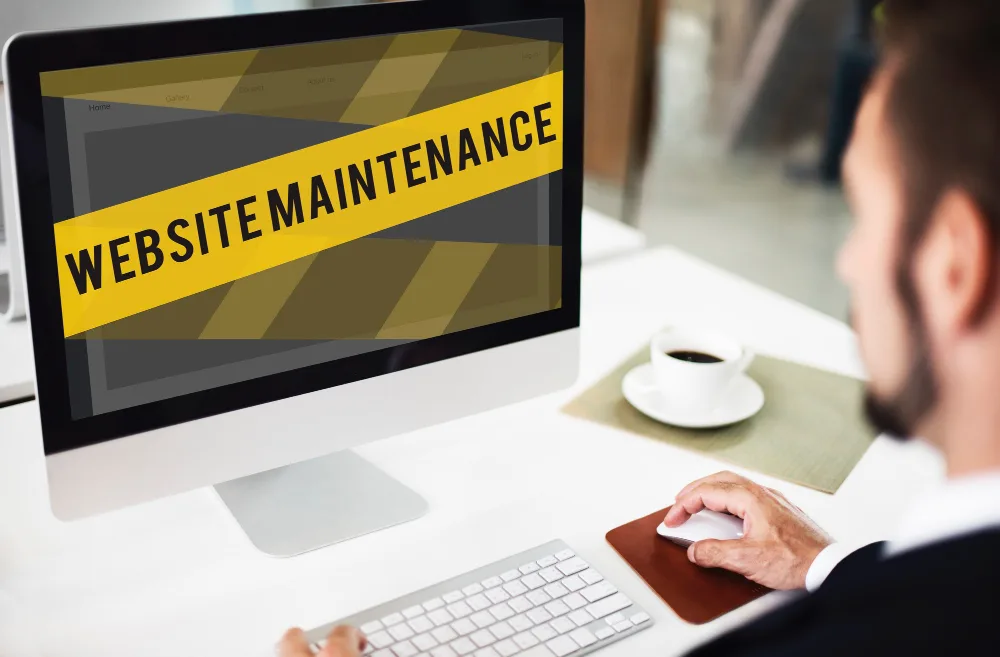Let’s be real—owning a small business is already a lot. You’re juggling marketing, products, customers… and now you’re told your website needs “maintenance”? And it costs something every month?
Yes, but here’s the good news:
-
Web maintenance doesn’t have to be expensive.
-
You can do it smartly, even on a budget.
-
And no—you don’t need to be a tech wizard to understand it.
This guide will break it all down for you in plain, simple words—because we know you’re busy, and we get it. Let’s dive in.
What Is Web Maintenance, Really?
At first, web maintenance might seem big and complicated. It’s easy to feel overwhelmed. But the truth is, we can break it into a few simple parts:
Security, Performance, User Experience and Bug Fixes, and Search Engine Optimization (SEO) and General Maintenance Issues.
When you see it this way, it’s much easier to focus on what really matters for your business.
Web maintenance is not just tech stuff. It’s smart business care that keeps your website running strong, bringing in customers, and staying ahead of your competition.
Why Website Maintenance Matters for Your Business
Skipping maintenance is like skipping oil changes on a car.
It might run fine at first, but little by little, things break down—and it costs way more to fix later.
-
A slow or broken website can lose customers.
-
Poor security can put your business (and customers!) at risk.
-
Bad SEO can make it harder for people to find you online.
Taking care of your website is taking care of your business.
How Much Does Web Maintenance Cost (And How Can You Save Money)?
Now you might be thinking: “All this sounds expensive!”
But don’t worry—there are ways to save while still doing things right.
One important tip:
It’s always cheaper to fix small problems early than to pay for big repairs later.
Breakdown of Web Maintenance Costs
Security
Keeping your site safe is super important.
If you’re using Wix,Webflow, Squarespace, or something similar, good news: they manage a lot of the security for you. It’s already included in your monthly fee.
But if you use WordPress or another self-hosted platform, you’ll need to keep up with updates and security fixes yourself. Some hosting companies offer help with this through a fully managed offering where they provide security updates, backups, etc. such as wpengine , but it costs extra. Also, the quality of these services can sometimes be hit or miss.
No matter which service you go with you should always:
-
Do weekly checks for software updates and watch for security alerts.
-
And if you skip this, your site becomes an easy target for hackers.
Website Backups are also a big part of security!
Backups make a copy of your site, so if anything goes wrong—like getting hacked or something breaking—you can quickly restore it.
Some hosting providers include free backups. Others might charge around $2–$10 a month, or you can set up free backup plugins on WordPress such WPVivid.
What about SSL certificates?
Some articles say SSL costs extra, but here’s the truth:
Most small businesses don’t need to pay extra for SSL.
Today, many hosting and domain providers give it to you for free. If not, you can get a free SSL certificate from Let’s Encrypt.
DIY Cost: Your time (a few hours a month).
Pro Cost: About $150–$200/month for a firm to handle updates, security checks, backups, and fixes.
Money-Saving Tip: Always check if your hosting company includes free SSL, backups, and automatic updates—it can save you a lot!
Tip: Security is not something you should mess around with if you’re not serious about it as 60% of small businesses that experience data breaches either close permanently or file for bankruptcy within six months.
Over time, adding new features, big images, or fancy effects can slow your site down.
And here’s the thing—slow sites lose customers. Studies show even a 1-second delay can drop conversions by up to 7%!
If you’re on Wix, Webflow, Squarespace, or something similar, they optimize a lot of this for you.
If you’re on WordPress, you need to be more hands-on.
Simple ways to improve performance:
-
Compress images (use free tools like TinyPNG)
-
Delete unused plugins and themes
-
Choose a fast, reliable web host
DIY Cost: Free to $10/month for optimization tools.
Pro Cost: About $50–$200/month for performance tuning.
Money-Saving Tip: Some hosting plans come with built-in caching and speed tools, so check before paying extra! Also, always make sure you’re not leaving around old and unused files adding unnecessary bloat to your web experience.
User Experience (UX) and Bug Fixes
User experience is about how easy and enjoyable your site is for visitors.
Over time, designs get old and small bugs pop up—things like:
Even a tiny bug can scare a customer away.
DIY Cost: Your time doing monthly site tests.
Pro Cost: About $50–$150/month for ongoing UX and bug fix support.
Money-Saving Tip: Use free tools like Google’s Mobile-Friendly Test and PageSpeed Insights to spot problems early, before they grow.
Search Engine Optimization (SEO)
SEO (Search Engine Optimization) helps people find your website on Google.
Even if your website starts with great SEO, it doesn’t stay perfect forever.
Here’s why SEO needs regular care:
-
New websites with fresher, better content are always being made.
-
If people click your site and leave quickly, Google notices and might lower your rank.
-
Old or broken pages make search engines think your site is outdated.
That’s why it’s important to refresh your content, fix broken links, and make small updates often.
This keeps your website active and helps you stay near the top in search results.
If you’re using Wix, Webflow, or Squarespace, they help with some SEO basics automatically.
If you’re using WordPress, you’ll need to do a little more work—but the good news is there are helpful tools!
Helpful Tools:
On WordPress, you can use plugins like Yoast SEO or Rank Math.
These tools give you easy checklists to improve each page’s SEO, like adding keywords, fixing meta descriptions, and checking page titles.
DIY Cost: Just your time (a few hours a month).
Pro Cost: Hiring an SEO service usually costs around $100–$500 a month, depending on how much work you want done.
Important:
SEO can take a lot of time—especially if you are in a busy or competitive niche.
If you feel SEO is pulling you away from running your business, it’s smart to hire a professional.
They can handle the hard parts while you focus on what you do best!
Easy SEO Tips to Save Money
Daily:
-
Reply to any blog comments or customer reviews.
-
Write down blog ideas or tips your customers ask about.
-
Comment on a few social media posts to stay active and get noticed.
Weekly:
-
Post something new on your social media (even a small tip or photo).
-
Check that all your website links still work.
-
Pick one page to review: Is the info still helpful and fresh?
Monthly:
-
Add a few new sentences to an old blog post or service page.
-
Post a brand new blog, update, or customer story.
-
Update keywords or improve the loading speed of one page.
-
Test your website speed using free tools like PageSpeed Insights.
Money-Saving Tip:
A little SEO work each week keeps your website strong and saves you from big, expensive fixes later.
Plus, staying active on social media by making posts or commenting helps more people find and trust your brand!
Other General Costs to Keep In Mind
Besides web maintenance, there are a few other small costs that come up every year.
-
Domain Name Renewals:
Your domain (like yourbusiness.com) usually costs $10–$20 a year to renew.
Some premium names can cost more, but most small businesses pay around this amount.
-
Hosting Renewals:
If you’re using WordPress or another self-hosted site, you’ll need to pay for hosting. This can cost $50–$200 a year depending on the company and plan.
-
Software Licenses or Premium Plugins:
Some WordPress plugins or special tools might charge yearly. Costs vary, but many are around $30–$100 a year.
Money-Saving Tip: Always set your domain and hosting to auto-renew so you don’t accidentally lose your website or domain name!
Many web hosts offer these bundled with their plans, so make sure you aren’t paying for them twice!
Final Thoughts
Keeping your website healthy doesn’t have to be a huge job or cost a fortune.
When you break it into small, smart steps, it’s totally doable—even for a busy small business owner like you.
And remember:
Taking care of your website = taking care of your business.
A little love today can save you a lot of stress (and money) tomorrow. WebstudioTO is more than happy to help for any of these areas and offer various flexible pricing plans depending on your needs. Feel free to reach out to us if you have any questions.



